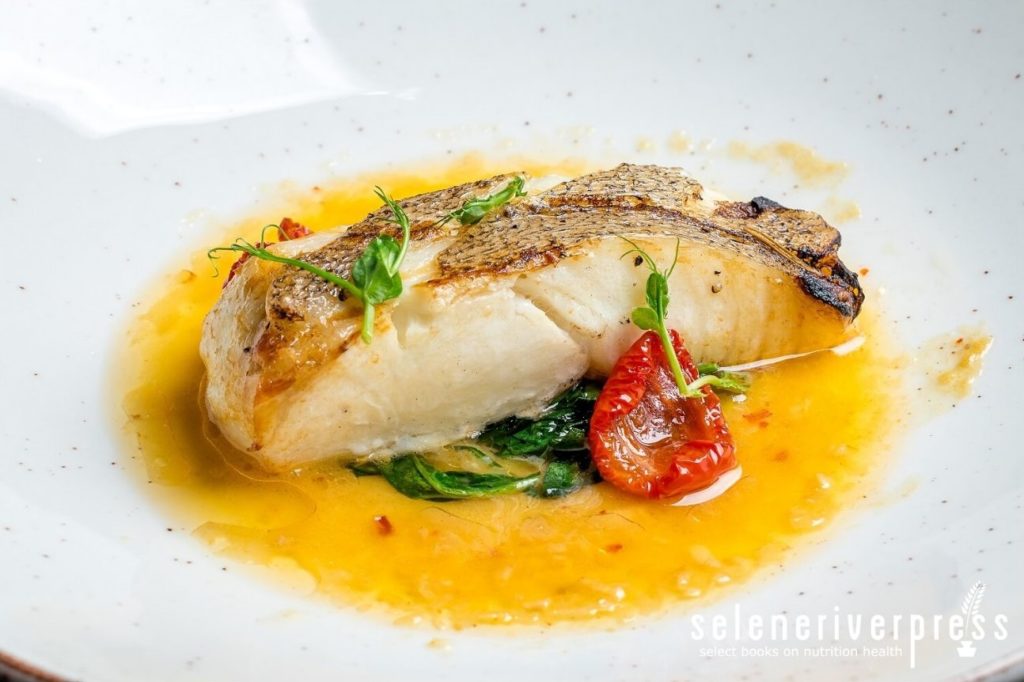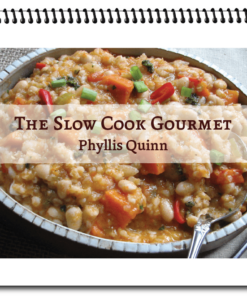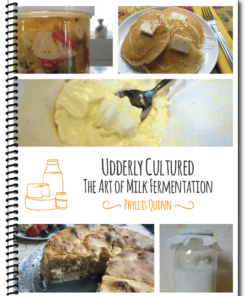Ask Chef Phyllis
It’s the time of year that my husband goes fishing in British Columbia with his buddies. He comes home with great fish, but I’m tired of making and eating it the same old way. I usually dip it in pancake and beer batter and fry it. I’m thinking that deep-fat frying isn’t good for us all the time. Can you help with new ideas? Fried fish is quick, but I’m bored and looking for new options.
—Judy Marianna Poltz, California
I’m envious that you have enough fresh fish to need more recipes to satisfy your family. And I admit that I too like a good fish fry once in a while myself. What’s not to like? Fish and chips. Oh my, worldwide famous. (And the makings of yet another post, as I’m so fond of saying, Judy.)
I know that fresh fish from the Pacific Northwest is unique. Halibut, lingcod, and different seasonal salmon are better quality than what most of us can purchase at local supermarkets (at high prices). You are lucky indeed.
A Colorado friend once told me that his fishing trip to British Columbia and Vancouver Island resulted in the most expensive fish he ever ate—but the most exciting as well. I understand lingcod and some salmon give a good fight to the fisherman eager for this thrill.
I have some easy solutions and even easier recipes for your dilemma. The first is a flavorful and tasty steamed halibut with grapefruit (don’t be turned off), plus tomatoes, olives, and feta. The fish steams atop simmering vegetables, and it’s just as fast as frying. Serve it with some brown rice and lots of freshly chopped cilantro if you wish.
Steamed Halibut with Grapefruit
Chef’s note: Grapefruit and fish…well, you’d never think these two would go together (or so go the lyrics of many a song). But this dish will convince doubters in short order, and the whole thing only takes about 20 to 25 minutes in total.
You may substitute another firm white fish such as Alaskan cod or striped bass, but the halibut is still my first choice. Also, you can get fresh grapefruit segments in the produce section of your grocery store, unless you’re handy at making your own. Brown steamed rice is a good accompaniment to this dish.
Ingredients
3 tablespoons olive oil
2 tablespoons butter
3 cups thinly sliced onions
3 cloves garlic, sliced
1 (15 oz.) can diced fire-roasted tomatoes
1½ cups white wine
1½ cups grapefruit segments (no sugar)
⅓–½ cup sliced, pitted kalamata olives
6 (6 oz.) halibut fillets
Sea salt and black pepper, to taste (you may want to use salt sparingly as feta and olives are both fairly salty)
3 oz. feta cheese, drained and broken into pieces
3 tablespoons chopped fresh chives
Instructions
- Heat oil and butter in a heavy skillet. Add onions and garlic and sauté until tender and beginning to brown, about 8–10 minutes.
- Add tomatoes and wine and bring to a boil. Reduce heat to medium low and simmer 3 minutes.
- Gently stir in grapefruit segments and olives.
- Arrange halibut atop the vegetable mixture in the skillet. Cover and simmer gently until the halibut is opaque, about 12 minutes.
- To serve, spoon/arrange the vegetables on a heated platter. Season lightly with sea salt and pepper to taste. Top vegetables with halibut and sprinkle with crumbled feta and chives.
Marinated Salmon with Cucumber-Daikon Relish
Chef’s note: Not counting the marinating time, this is a quick recipe that is especially delicious and different. Draining the cucumbers makes a relish that’s not too watery, which is usually a problem.
Ingredients
For the marinade and fish:
¼ cup mirin
2 tablespoons unseasoned rice vinegar
2 tablespoons minced green onions
2 tablespoons minced or grated fresh ginger
2 teaspoons sesame seeds, plus more for garnish if desired
2 teaspoon sesame oil
6 (6 oz.) Alaskan salmon fillets
2 tablespoons butter, for greasing pan
For the Cucumber-Daikon Relish:
2 English cucumbers, peeled, seeded and cut into ¼-inch slices
2 teaspoons sea salt
⅔ cup unseasoned rice vinegar
¼ cup honey
1 tablespoon minced fresh ginger or ½ teaspoon powdered ginger
⅛ teaspoon cayenne pepper (optional)
8 oz. daikon (Japanese radish), peeled and cut into ¼-inch sticks
Instructions
- Mix marinade ingredients in a 13×9-inch baking dish. Add salmon and turn to coat. Set aside for 30 minutes while you make the relish.
- Prepare relish: In a colander placed over a bowl, toss cucumbers with sea salt. Let stand 15 minutes, then drain cucumbers and pat dry.
- Stir vinegar, honey, ginger, and cayenne in a bowl.
- Add cucumbers and daikon radish and toss to coat. Cover and chill for at least 30 minutes.
- Preheat broiler and grease a heavy baking tray with butter. Remove salmon from the marinade and arrange skin side up on the prepared baking sheet.
- Broil on low for 5–6 minutes until the skin is crisp. Carefully turn salmon and broil on second side until golden brown, about 4 minutes. All in all, the broiling should take 9–12 minutes.
- Plate salmon filets skin side down and nestle the relish all around it. Sprinkle with more sesame seeds if desired. Serve immediately.
I hope these new and exciting recipes become your favorites too. Happy eating!
Image from iStock/Максим Крысанов.





